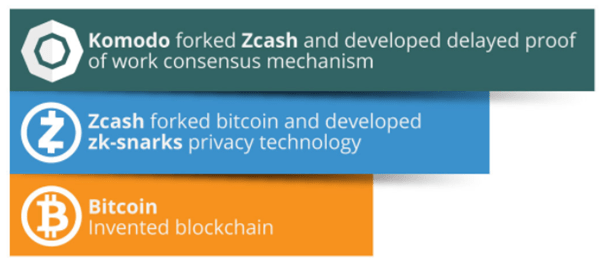Cryptocurrency is at the center of 2 complex industries: money and technology. The Bitcoin whitepaper released by Satoshi Nakamoto in 2009 was a revolutionary document, and has led to an industry that’s determined to spread its benefits worldwide.
The revolutionary nature of Bitcoin is on par with the invention of the car, or the airplane. Building a machine that’s proved to change transportation forever is a giant step forward for humankind. Once the novelty wears off, we’re left with scientists, businessmen, and engineers working non-stop to improve the technology, which eventually brought us electric cars and spaceships, both of which recently overshot Mars.
We can see the same thing happening today within the crypto industry. There’s a significant amount of people who believe blockchain technology with change the way our money works forever. The question then isn’t if mass adoption will occur, but which project will find long-term success.
Here are 3 undervalued projects in an undervalued industry.
3 Undervalued Altcoins To Keep an Eye On
Cardano (ADA)

Project Overview
Cardano is a an open-source, decentralized cryptocurrency that runs on a public blockchain, supporting smart contracts, sidechains, and more.
When setting out to answer the question, “What’s the best way to scale cryptocurrencies globally?” Cardano’s approach is based on systems that utilize peer-reviewed academic research.
This approach puts them in a different position than many of the projects looking to capitalize on marketing efforts and hype about the space. Instead of racing to get a product to the market, Cardano is slowing down and making sure they’re releasing secure, proven technology.
Why is ADA Undervalued?
Much of the reason why ADA is undervalued lies within their business model. Leading the developmental department of the venture is Charles Hoskinson, the former CEO of Ethereum.
Being in the industry for years allowed Hoskinson to witness enough blockchain business models that he decided to branch off and start one designed for the long haul. In 2015, Hoskinson and Jeremy Wood founded Input Output Hong Kong (IOHK), which is a technology company that claims to be:
Committed to using peer-to-peer innovations to provide financial services to the three billion people who don’t have them.
Proof-of-Stake Mining
As blockchain technology works through growing pains, different models are being tested, each with their own pros and cons. At the center of the technology lies what’s known as a consensus algorithm, which is the system a network of different computers use to agree on a particular piece of data (like the amount of money in your bank account).
The 2 main types of consensus algorithms boil down to Proof-of-Work (PoW) and Proof-of-Stake (PoS). PoW is more decentralized, but bulky and slow. PoS is fast, but difficult to create in a secure manner. By combining elements of both, Cardano released Ouroboros, which they describe in an academic paper as “the first blockchain protocol based on proof of stake with rigorous security guarantees.”
Checks and Balances
Cardano is made up of 3 separate companies all aiming at the common goal of their platform’s success. The purpose of breaking the responsibilities of the project into 3 independent companies was to prevent the failure of 1 section of the project from bringing down the rest.
In a video released by Hoskinson, a rift was revealed between the Cardano Foundation, and IOHK and Emurgo. You can read the details here, but it was refreshing to see the conflict held in an objective, fact-driven way.
Navigating within any emerging market is a tall order, and building a resilient business model that’s proven to work could make all the difference in the years to come.
ADA is priced at $0.075 at the time of writing, down from its all-time high (ATH) of $1.32 in January 2018.
Komodo (KMD)

Project Overview
Komodo is another cryptocurrency platform that allows smart contracts and other blockchain-based projects to build on top of their protocols. The basic purpose of Komodo is to provide private, secure transactions, with the ability to operate on a variety of blockchains.
The project started with a brief “Declaration of Independence” in early 2016, which was posted on Bitcointalk by founder James Lee, which outlined a blockchain agnostic future.
We the asset holders hereby declare our independence from any single blockchain. An open and jointly developed specification on cross chain atomic asset transfers will be developed. Any current or future blockchain is invited to join.
Why is KMD Undervalued?
Komodo uses zk-SNARK technology, which stands for Zero-Knowledge Succinct Non-Interactive Argument of Knowledge. It’s a mouthful, but Zcash summarizes it by its ability to allow users to “prove possession of certain information, e.g. a secret key, without revealing that information, and without any interaction between the prover and verifier.”

Alongside the anonymity brought on by Zcash technology, Komodo will deploy a Delayed Proof of Work (dPoW) consensus algorithm, which was first used by BitShares, to allow energy used during Bitcoin mining to be used to secure other cryptocurrencies. This in turn makes Bitcoin more efficient, and enters it as a truly vital part of the cryptocurrency ecosystem.
Focus on Tech, Not Marketing
Bringing cryptocurrencies to hardware wallets across the globe is a massive undertaking, and the technology isn’t quite there yet. Instead of spending money on marketing, the Komodo team spends their time developing the protocols they believe will make an impact on the world.
When asked the question, “What’s your current roadmap?” the team responds by saying they’re focused on current tasks at hand, which include their decentralized exchange, public dICO process, and their language-agnostic smart contracts. They also just recently mined their 1 millionth block, almost exactly 2 years after their genesis.
Reward System
Those who hold more than 10 KMD in their wallets can expect to see an annual return of 5% KMD, which begins accumulating just minutes after their tokens arrive. The rewards will continue until there are 200 million KMD in circulation, and at the time of writing, there are 110 million KMD circulating.
The reward process is similar to Proof of Stake, since each KMD holder is “minting” new tokens. The difference is your wallet doesn’t need to be online in order to receive rewards, and the only requirement is that you control your private key.
All that said, rewards cannot be claimed on exchanges. You can check out compatible wallets here.
KMD is priced at $1.33 at the time of writing, down from its ATH of $15.41 in December 2017.
Substratum (SUB)

Project Overview
When media outlets and information keepers are centralized, power accumulates into small groups of people. 2018 was a significant year in terms of internet usage, as more than half the global population now have access to the internet. This means an increasingly small number of corporations have control over the information being disseminated to a growing number of minds.
Substratum is aiming to curtail and even reverse this trend by decentralizing the internet itself. Imagine having your internet bill eliminated, and instead you pay a microtransaction to a Substratum node relative to the amount of bandwidth used. This leads to an internet that’s free of censorship, hosted and managed by Substratum users.
What’s particularly appealing about SUB is that you can earn it while you sleep by renting spare computer power out to the network. The end goal is to provide internet connection to any browser, on both computers and smartphones.
Why is SUB Undervalued?
As debate surrounding net neutrality comes in and out of the public’s attention, it’s becoming more of a concern throughout online communities.
The concern is nothing new, as it’s been advantageous for centralized powers to gather intel on regular citizens since the dawn of civilization. However, with the increasing influence of the internet, private corporations are able to gather detailed information about us through social media platforms, content providers, and more.
Privacy is Undervalued
Most will agree that the internet has altered the course of human history in a massive way. It seems so obvious, but it also feels like it snuck up on us before we realized what was happening.
Now there are cameras on every street corner, and companies like Facebook, with 2.23 billion monthly active users, are being brought court for privacy scandals. It’s a very ambitious goal to get a majority of the population active enough in their concern over privacy to do something about it, but regardless of the height of this order, Substratum is preparing for a tipping point.
Justin Tabb, co-founder of Substratum, says this on the website:
One day, Americans might wake up and realize they don’t like big brother watching over their shoulder and having corporations track everything they do. And when that happens, Substratum will be there.
Open Beta Live
At the end of April 2018, the Substratum team released a beta version of their software to the public, allowing users to get hands-on experience with the platform. While it’s still a rough version of an end product, the beta version includes a basic user interface, internet access, neighborhoods, an earning mechanism, and the ability to leave feedback on the project.
There’s a few terms in that list that only Substratum followers will understand, and if you’d like to know how the system works, be sure to check out the end of this article.
SUB is priced at $0.113 at the time of writing, down from its ATH of $3.25 in January 2018.

